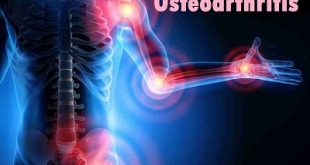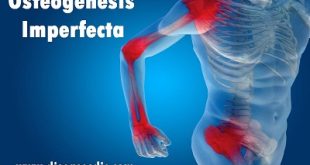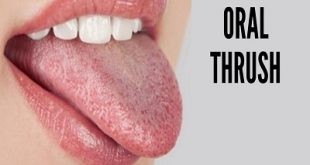Overview
Onychauxis is a nail condition that presents thickened nails without structural deformity. It is also known as nail hypertrophy or hypertrophic nails. Onychauxis is more prevalent in the elderly people and can occur in either, toenails or fingernails. Many times, in fact, onychauxis is a natural part of aging. It is easy to see how a client or a tech could overlook the condition as harmless and treat it as little more than an unsightly growth of the nail. However, onychauxis can be a secondary symptom of a larger problem, so it shouldn’t be dismissed too easily.
Onychauxis causes
Onychauxis may be the result of several conditions or issues. Your doctor can diagnose what the underlying issue for your abnormal nail growth is.
The most common causes for onychauxis include:
- Hereditary causes. If one or both of your parents have this nail condition, you’re more likely to develop it.
- Acute trauma. Stubbing your toe or dropping a heavy object on it can cause trauma to your nail bed and nail plate. The trauma may cause nail thickening. In some cases, this may be temporary until the nail heals.
- Chronic trauma. Individuals who inflict a good deal of pressure on their feet for long periods of time, such as athletes, dancers, or runners, may be more likely to develop this nail disorder. The long-term stress on the nail beds and nail plates may trigger the unusual growth. Wearing shoes that are too tight or too small can also cause this condition.
- This hormonal disorder is the result of too much growth hormone. Though rare, it can cause nails to growth denser.
- This skin condition causes thick patches of scaly skin, and it can cause nails to grow thicker and more brittle. More than half of people with psoriasis will experience nail psoriasis, too.
- Reduced circulation. Without a proper supply of nutrients, your nails may be unable to grow properly.
- People with diabetes commonlyTrusted Source develop thick nails. This may be a complication of the disease, or it may be the result of reduced circulation, which is also common with diabetes.
- Darier disease. A genetic skin disorder, Darier disease causes wart-like blemishes that may be yellow, emit a strong odor, and are hard to the touch. This condition can also cause nail abnormalities, including white and red stripes in the nail plate and unusual thickness.
- A yeast or fungal infection in the nail bed or around the nail plate can cause symptoms, including discoloration and thicker nails.
- Pityriasis rubra pilaris. This rare skin condition causes chronic inflammation and reddish-orange scales or blotches on the skin. It can also lead to nail thickening, discoloration, and shedding.
Who is at risk for developing Onychauxis?
You are more likely to contract nail fungus from:
- Being barefoot in public places with wet floors, such as swimming pools, showers, and gyms
- Frequent or prolonged exposure to water
- Shoes that constrict your feet
- Sweaty feet and shoes
- Damage to a nails
- Athlete’s foot that spreads to your nails
- Medications that suppress your immune system
- Genetics
- Smoking
You may also be more likely to contract nail fungus if you have a pre-existing medical condition, such as:
- Type 1 diabetes
- Type 2 diabetes
- Circulatory conditions
- Psoriasis
Cancer treatments may increase the likelihood of developing nail fungus. If you have a pre-existing condition and develop fungus, it’s very important to treat it as soon as possible.
What symptoms accompany Onychauxis?
- The most obvious symptom of Onychauxis is an abnormal thickening of the nail plate in the finger or toe
- The nails usually thicken on the upper part
- These can become white or yellowish in some patients with the nail edges falling apart
- The most obvious symptom of Onychauxis is an abnormal thickening of the nail plate in the finger or toe
- The nails usually thicken on the upper part
- These can become white or yellowish in some patients with the nail edges falling apart
Complications
- Local complications of onychauxis include distal onycholysis, increased susceptibility to acquiring onychomycosis, and pain.
- Subungual ulceration and hemorrhage may also occur in elderly patients with onychauxis as a result of constant pressure of the hypertrophic nail on the underlying and surrounding tissues.
Diagnosis
A doctor will look at a person’s medical history and examine their nails. If their thick nails are due to an underlying condition, the doctor may prescribe further therapies to help address the new symptom.
For those with fungal infections, the doctor may need to swab under the nail or take a clipping to test for fungal growth. It is important to diagnose a fungal infection early to curtail it quickly.
Onychauxis treatment
Treatment for onychauxis falls into two main categories:
- Medical treatments
- Home remedy options
There isn’t standard treatment for this condition. Instead, your doctor will decide a course of action based on a suspected cause and your specific symptoms.
It’s important to note that you don’t have to treat this condition unless it becomes painful and interferes with your day-to-day activities. However, many individuals will seek out a treatment or diagnosis for an underlying condition because the nails may be unsightly.
Medical treatments for onychauxis
Treat underlying conditions. If you have this nail growth issue, your doctor may want to identify potential issues that could be causing it. In some cases, there isn’t an underlying issue, but if one can be found, it can be treated. Treatment means the thick growths and discoloration may stop.
Removal of the affected nail. In extreme cases, your doctor may choose to remove a portion or all of the thickened nail. This is an option when the nail becomes so thick you experience severe pain and can’t properly care for it on your own anymore.
Home remedy options
- Keep neat, trimmed nails. Trimming your nails frequently will help with their appearance. It may also ease some pain if nails rub against shoes and cause discomfort. If your nail clippers aren’t thick enough to tackle the job, talk with your doctor about any special tools you may need. Eventually, you may need to see a podiatrist, a doctor who specializes in the treatment of conditions and diseases of the foot, ankle, and lower limbs.
- Wear comfortable shoes. Tight shoes may cause onychauxis, and they may make symptoms, especially pain, worse. A professional shoe fitting can help you decide if you need a wider shoe option so your toes have plenty of room. Wide-toe shoes may be a smart option if you frequently experience pain from toenails rubbing against your shoes.
- Paint with a polish. Nail polish may help cover the discoloration, but it will not end or stop the abnormal growth.
- Move more. Boost circulation in your lower extremities by walking, riding a bicycle, or otherwise moving more. The increase in blood, oxygen, and other nutrients may end the unusual nail growth issue.
Prevention of Onychauxis:
- Proper Nail Trimming: Trim your nails straight across the upper edge rather than making them around at the top. The rough edges should be smoothened with a file.
- Wear Light Shoes: Wear shoes that provide enough space for your nails to breathe. Try wearing open-toed sandals from time to time. This will give space for your nails and let them grow easily. An injury to the nails can also lead to Onychauxis.
- Dietary Modifications: Consumption of food rich in Vitamin C and proteins help in the proper growth of nails by supplying them with appropriate nutrients at all times and prevents Onychauxis. Such foods include tomatoes, oranges, cauliflowers, broccoli, cantaloupes, red peppers, grapefruits, strawberries etc.
- Proper Cleaning of Nails & Feet: Proper cleaning of nails and feet is essential to prevent them from catching any bacterial or fungal infection. The condition of the nails worsens once they catch any bacterial or fungal infections. Hence, if you follow prevention methods properly, occurrence of Onychauxis can be avoided.
- Regular Exercise: Exercising regularly does not only have effects on you physical appearance but it affects every little thing on your body including the nails. If you exercise regularly, you will have proper flow of blood to all the parts of your body, which will help in providing appropriate nutrients for the nails to grow healthy.
 Diseases Treatments Dictionary This is complete solution to read all diseases treatments Which covers Prevention, Causes, Symptoms, Medical Terms, Drugs, Prescription, Natural Remedies with cures and Treatments. Most of the common diseases were listed in names, split with categories.
Diseases Treatments Dictionary This is complete solution to read all diseases treatments Which covers Prevention, Causes, Symptoms, Medical Terms, Drugs, Prescription, Natural Remedies with cures and Treatments. Most of the common diseases were listed in names, split with categories.







